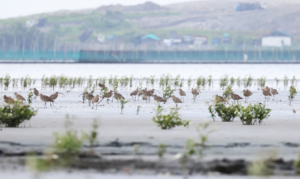
Fig. 1. Far Eastern Curlews in Tanza, Navotas City 2022. © Irene Dy
Far Eastern Curlew (Numenius madagascariensis) is a large shorebird species found in the East Asian-Australasian Flyway. It is assessed by the International Union for the Conservation of Nature (IUCN) as an Endangered species and is part of Appendix I of the Convention on Migratory Species (CMS). The species is mainly threatened by habitat loss due to conversion of mudflats for agricultural purposes, mangrove plantation directly in the mudflats, reclamation, and urbanization. They also face threats such as solid waste and water pollution, fishing bycatch, human disturbance, and climate change.
The Philippines is a mega diverse country found in the Southeast Asian region. It is home to about 725 species of birds, wherein 278 species are migratory or accidental species. As an archipelagic country comprising of 7,640 islands, it has extensive coastal shorelines and bodies of water that are ideal for shorebirds including curlews.
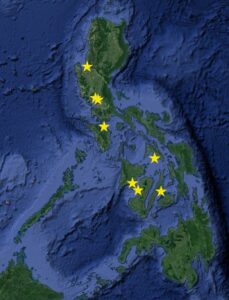
Figure 2. Philippine Map showing major areas surveyed
In selected dates from October to December 2022, eight major areas in the Philippines were visited to conduct census of Far Eastern Curlew (Fig. 2). In mainland Luzon, sites surveyed were Pamarawan in Bulacan province, Tanza in National Capital Region, and localities in La Union province. In Bicol Region, Masbate localities were surveyed. In the Southwestern part of Greater Luzon, Mindoro localities were surveyed. And in the West Visayas Region, Cebu, Negros, and Iloilo were the areas surveyed.
All surveys were led by Irene Dy, a professional Filipino bird guide and bird photographer. She has conducted multiple birding expeditions, both personal and professional guidance as well as volunteered for local and national environmental NGOs and other organizations for awareness raising and conservation of Philippine birds. The Far Eastern Curlew census started on 28 October, 2022, until 28 December, 2022 taking into account the tide levels in each of the areas surveyed.
Pamarawan surveys were conducted on 28 October, 2022 and 27 November, 2022. Five sites were surveyed: Vitas Mudflat, Sandbar-Mudflat, Pulo-Pulo Mudflat, Berting’s Salt Farm, and Albert’s Salt Farm. A total of 45 species was recorded throughout the survey period with a maximum total count of 17,012 individuals. On Far Eastern Curlew, only one individual was recorded at Pulo-Pulo Mudflat. Other significant records were Nordmann’s Greenshank, Great Knot, and Chinese Egret.
In Tanza, Navotas City, surveys were conducted on 31 October, 2022 and 01 November, 2022. This area had the highest number of Far Eastern Curlews recorded, with a maximum total count of 99 individuals. Far Eastern Curlew flock spread across the water edge of mudflat and the drier part near the mangrove area. Individuals were observed to be either resting, sleeping, foraging, actively vocalizing in the mudflat, duetting in pairs while in flight, or actively vocalizing flock while in flight from mudflat going to the mouth of Batasan River. Accounting all the sightings, a total of 44 species of birds were recorded and with a maximum total count of 13, 882 individuals. Other threatened species include Great Knot and Chinese Egret.
In Mandaue City, Cebu, the surveys were conducted from 12-13 November, 2022. Four sites were surveyed: Fishpond site, Mudflat 1A, Mudflat 1B, and Mudflat 1C. A maximum total count of 24 Far Eastern Curlew was recorded. As an assessment, the ponds are high tide roosting sites of the species along with several other species. Site counts are totally tidal level dependent. Far Eastern Curlews tend to congregate in large numbers in the ponds inside the mangrove area during high tide. The total count of species recorded was 33 and a maximum total count of 1,050 individuals. Threatened species recorded were the Far Eastern Curlew and Chinese Egret.
In Negros Island, sites within the Negros Occidental Coastal Wetlands Conservation Area (NOCWCA) were surveyed from 15-18 November, 2022. These include barangays Tibsoc and Nayon in San Enrique; Pulupandan; barangays Bocana and Andulauan in Ilog. A maximum total count of ten Far Eastern Curlew was recorded. Accounting all species, a total of 54 species was recorded with a maximum total count of 4,256 individuals.
In Iloilo province, surveys were conducted on 19-20 November, 2022. Sites include Balabago and Bitoon in Jaro District as well as Hinactacan in La Paz District, all within Iloilo City. A maximum total count of 36 Far Eastern Curlews were recorded. On the other hand, a total of 54 species of birds was recorded with a maximum total count of 2,941 individuals. Within the Philippines, this site has one of the most numerous sightings of Lesser Sand Plover (Tibetan) (Charadrius mongolus atrifons) hence the record during the survey was very significant.
Survey in Masbate in the Bicol Region was conducted on 23-25 November, 2022. Mangrovetum Park and Pawa Mangrove Park in Masbate City as well as Naro Island Wildlife Sanctuary were the sites surveyed. A total of 47 species of birds was recorded with a maximum total count of 954 individuals. A male individual of Far Eastern Curlew was sighted at Naro Island. Threatened species recorded include Far Eastern Curlew, Chinese Egret, and a Visayan Hornbill at Pawa Mangrove Park.
In Mindoro, surveys were conducted on November 28-30, 2022. Sites include Silonay and Maidlang area in Calapan City, Oriental Mindoro as well as wetlands in the municipality of Pola, Oriental Mindoro. Presence of Far Eastern Curlew wasn’t documented though another site in Calapan City, Mahal Na Pangalan Marine Park had records of Far Eastern Curlews on October 09, 2021 (two individuals) and on November 20, 2021 (one individual). Throughout the survey, a total of 33 species was recorded with a maximum total count of 3,346 individuals.
La Union was the last area surveyed on December 26-28, 2022. Sites surveyed were within the towns of Santo Tomas and Agoo. A total of eight Far Eastern Curlew was recorded throughout the survey period. Accounting all the species recorded, a total of 42 species was recorded with a maximum total of 1,267 individuals. Aside from Far Eastern Curlew, threatened species include the Java Sparrow, Chinese Egret and Philippine Duck.
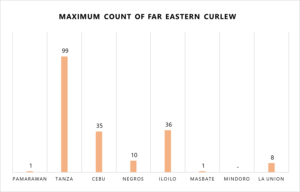
Figure 3. Maximum total counts of Far Eastern Curlew in each of the main areas surveyed
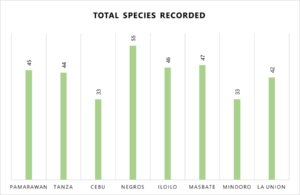
Figure 4. Total species recorded in each of the main areas surveyed
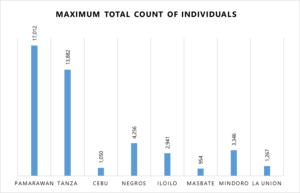
Figure 5. Maximum total count of individuals in each of the main areas surveyed
Throughout the survey period, Irene Dy was also able build capacity and influence locals as well as government personnel regarding bird identification and informing biodiversity conservation. They are now aware of the different species of migratory shorebirds, their importance, and their habitats.

Figure 6. Local from Bitoon, Lapaz District, Iloilo City, Iloilo Province observing shorebirds and waders including Far Eastern Curlew. Photo © Irene Dy 2022
The census received a lot of support from locals, local birders, local government units, as well as the Department of Environment and Natural Resources (DENR). A sincere gratitude to Lyndon Grondiano, a Cebu-based birder, who supported the survey in Cebu; Hon. Rose Faith Paas and the local government unit of Tibsoc in San Enrique, Negros Occidental as well as Kim Castańares of Ilog, Negros Occidental for their support and assistance in the surveys conducted in Negros; the DENR-Provincial Environment and Natural Resources Office (PENRO) of Oriental Mindoro through Amor Asi and Earl Meman, and the DENR-Community Environment and Natural Resources Office (CENRO) of Socorro, Oriental Mindoro through Jose Maria Fontanilla, Joey Albert San Diego, and Adrian Catud for their support and assistance in the surveys conducted in Mindoro; and DENR-Community Environment and Natural Resources Office (CENRO) of Mobo for their support and assistance in the surveys conducted in Masbate.
Thanks to Dr. Nial Moores and Dave Bakewell for the support and advice on species identification and confirmation.
Lastly, the sincerest gratitude to the government of Hwaseong City and the EAAFP Secretariat for the valuable financial support to initiate the Far Eastern Curlew census and conservation in the Philippines.
Prepared by Irene Dy and Virtito Natural Jr.
Citation:
Dy. I & V. Natural. 2023. Far Eastern Curlew (Numenius madagascariensis) Census (2022, the Philippines). EAAFP Secretariat, Hwaseong Eco Foundation, and Hwaseong City. [link]





